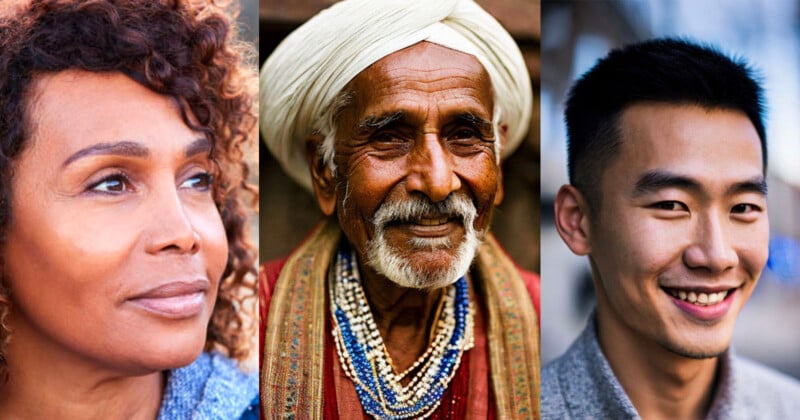40% of People Can’t Tell if a Face is AI Generated: Can You?

A study by the University of Waterloo found that 40 percent of people surveyed couldn’t distinguish between an AI-generated face and a real face.
The Canadian institute provided 20 unlabeled pictures to 260 participants; 10 of them were real people and the other 10 were generated by DALL-E or Stable Diffusion.
Only 61 percent could tell the difference between the AI images and genuine photos, far below the 85 percent researchers had expected when conducting the experiment.
Can You Tell Who is AI-Generated and Who is Real?
![]()
![]()
![]()
![]()
![]()
![]()
![]()
![]()
![]()
![]()
![]()
Answer: They are all AI-generated except for number three and number 11 (the last one).
The study participants were allowed to scrutinize the photos at length and the authors say they paid attention to details such as fingers, teeth, and eyes, but their assumptions weren’t always correct.
“People are not as adept at making the distinction as they think they are,” says Andreea Pocol, a PhD candidate in Computer Science at the University of Waterloo and the study’s lead author.
Pocol adds that people who are doomscrolling or don’t have time to inspect carefully won’t be able to realize that what they’re seeing is fake. That, coupled with how fast AI technology is improving, means there is a serious threat posed by AI images.
The University of Waterloo notes that academic research and legislation can’t keep up with the pace of technology. Pocol and colleagues began the study in late 2022 and since then AI image generators have improved greatly.
“Disinformation isn’t new, but the tools of disinformation have been constantly shifting and evolving,” Pocol adds. “It may get to a point where people, no matter how trained they will be, will still struggle to differentiate real images from fakes. That’s why we need to develop tools to identify and counter this. It’s like a new AI arms race.”
In November, a study by a team of researchers from Australia, the U.K., and the Netherlands found that AI-generated white faces are “more realistic” than actual human faces in photos.
To University of Waterloo’s study is paywalled and can be found here.